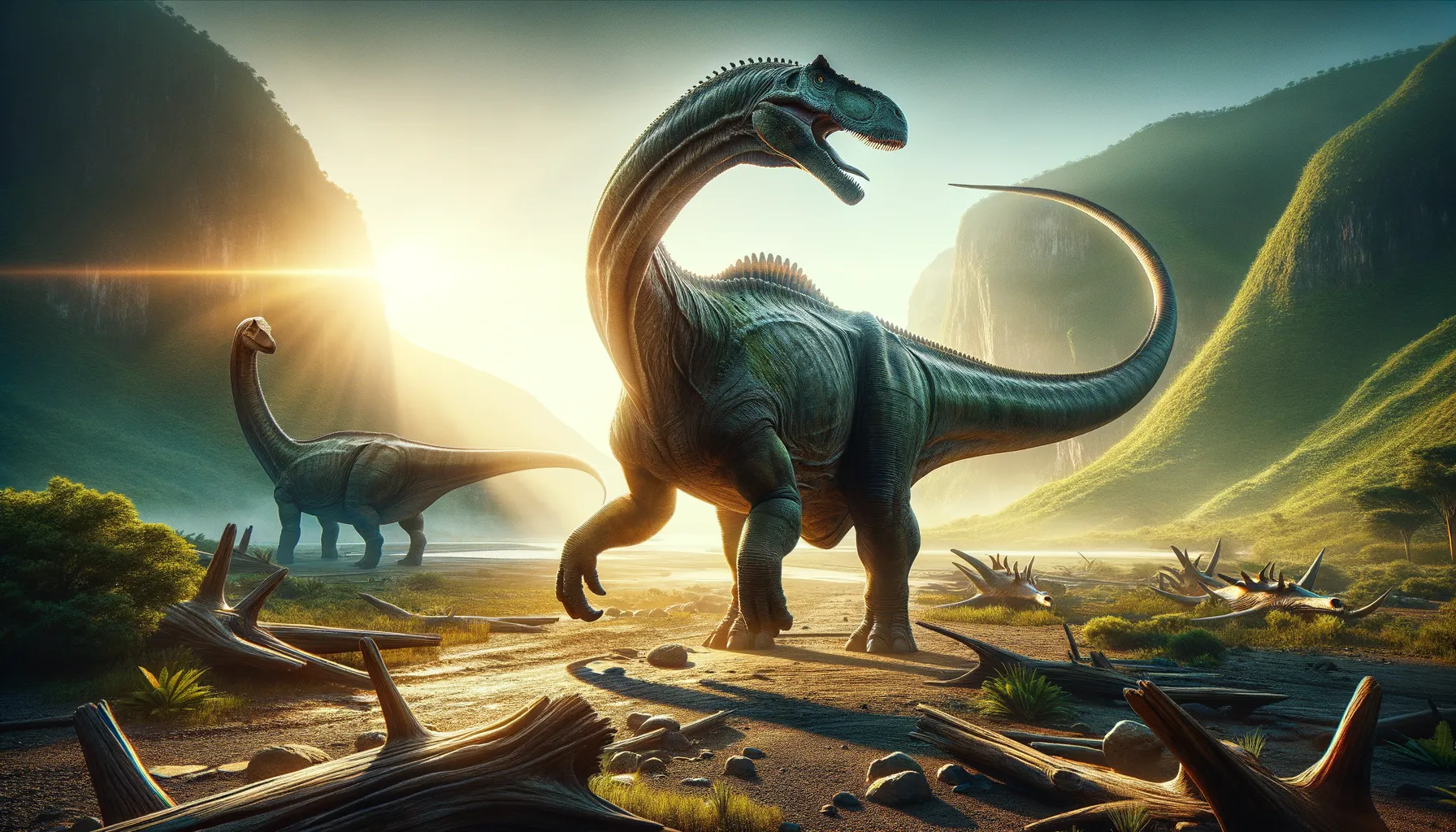
Maxakalisaurus
A Cretaceous giant from ancient Brazil!
Period
Cretaceous
Length
Approximately 13 meters long.
Height
About 7 meters tall at the hips.
Weight
Up to 9 tons.
Maxakalisaurus is a significant find in the realm of paleontology, being a large sauropod dinosaur discovered in Brazil. It lived during the Late Cretaceous period and was a herbivore, characterized by its long neck and tail. This dinosaur is important for understanding sauropod diversity and evolution in South America. The fossils mainly consist of vertebrae and limb bones, providing insights into its massive structure.
Diet
Maxakalisaurus was herbivorous, primarily feeding on vegetation. Its diet likely consisted of leaves, branches, and other plant material, which it could reach with its long neck.
Hunting
This dinosaur did not hunt as it was a plant-eater. Instead, it would forage for plant material in its habitat.
Environmental challenges
Living in the Late Cretaceous, Maxakalisaurus faced environmental challenges such as changing climates and varying plant availability. Competition with other herbivores for food would have been a key challenge. Predators like theropod dinosaurs may have posed a threat, especially to the young and vulnerable.
Speed
Slow-moving due to its massive size.
Lifespan
Estimated to be around 70-100 years.
First discovery
Discovered in 1998 in Brazil.
Fun Facts
- Maxakalisaurus was a giant dinosaur that lived around 80 million years ago during the Late Cretaceous period.
- This dinosaur was named after the Maxakali, an indigenous group in Brazil where its fossils were found.
- Maxakalisaurus is considered a titanosaur, a type of long-necked, plant-eating dinosaur related to other massive sauropods.
- It is estimated that Maxakalisaurus could grow up to 13 meters (about 43 feet) long, making it a tremendous presence in its time.
- Fossils of Maxakalisaurus were mainly discovered in Minas Gerais, a state in Brazil known for its rich fossil deposits.
- This dinosaur's bones were first described scientifically in 2006, adding an exciting chapter to the story of South American dinosaurs.
- Maxakalisaurus' distinctive feature includes a tail with bony armor, which might have been used for defense against predators.
Growth and Development
Like other sauropods, Maxakalisaurus likely had a rapid growth phase in its early years to reach a size that would help deter predators. Their growth was supported by a metabolism adapted to process vast amounts of plant matter. As they matured, their growth would slow, achieving full size by a few decades.
Habitat
Maxakalisaurus inhabited what is now Brazil, an area believed to have been rich in forested environments. It lived alongside other dinosaur species in a climate that was warm and humid. The region provided ample vegetation essential for sustaining large herbivores.
Interaction with other species
Maxakalisaurus likely coexisted with a variety of dinosaurs, including other sauropods, small herbivores, and carnivorous predators. These interactions may have been competitive or opportunistic, with little direct social engagement with other species. Protection in numbers could have been a strategy against predators.
Natural lifespan
In favorable conditions, Maxakalisaurus could live up to, or even over, a century.
Reproduction
Reproduction involved laying eggs, possibly in communal nests to increase the chances of survival. Parental care, if any, might have been limited, with young Maxakalisaurus growing rapidly to minimize vulnerability.
Social behaviour
Maxakalisaurus may have exhibited some degree of social behavior, like moving in groups, which was common among sauropods for protection. However, specific social structures and interactions remain speculative.
Fossil locations
Fossils of Maxakalisaurus have been primarily found in the Minas Gerais region of Brazil. This location has helped scientists understand more about dinosaur faunas of South America. The discovery has filled gaps in knowledge about sauropod distribution and evolution.
